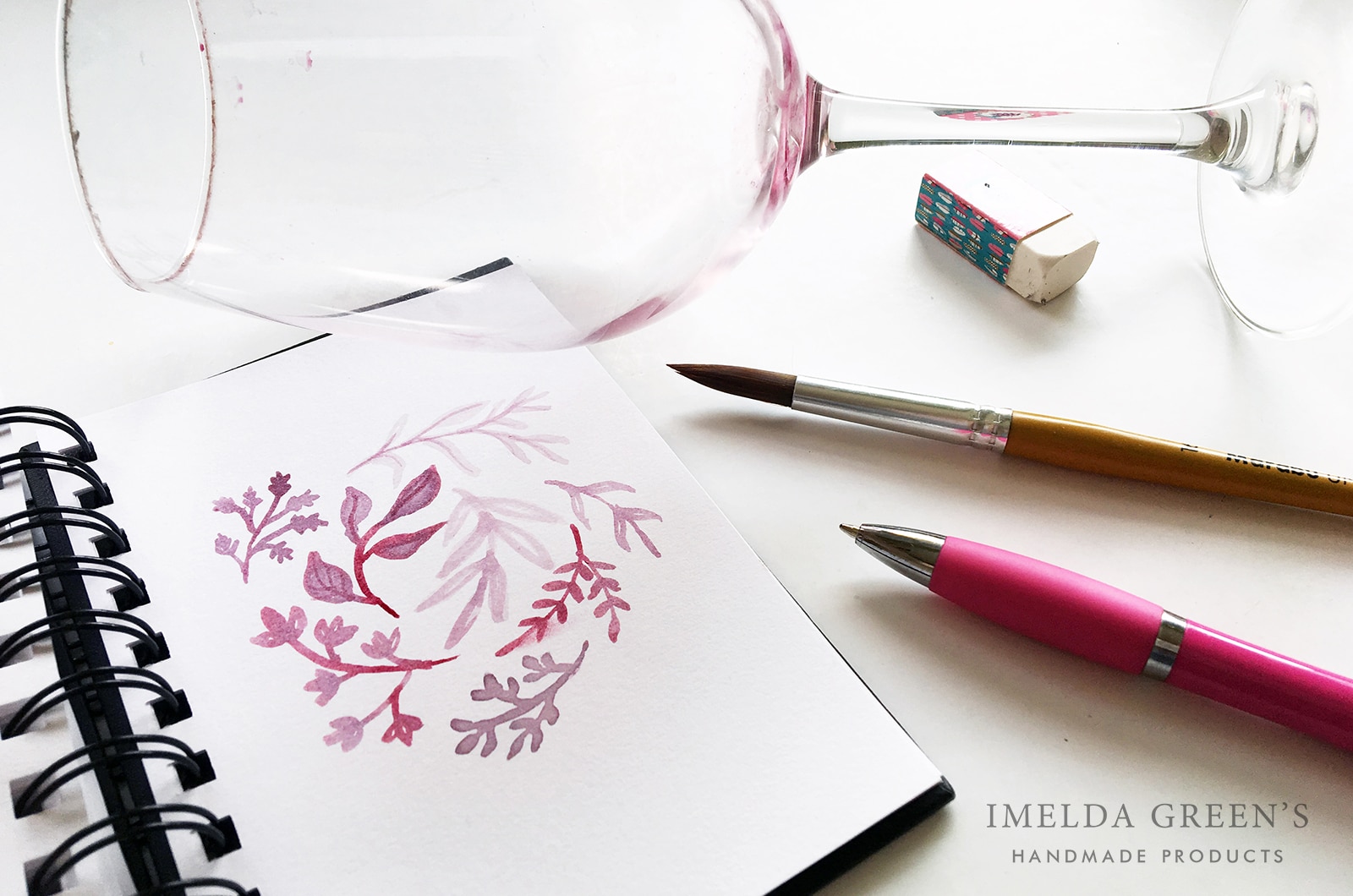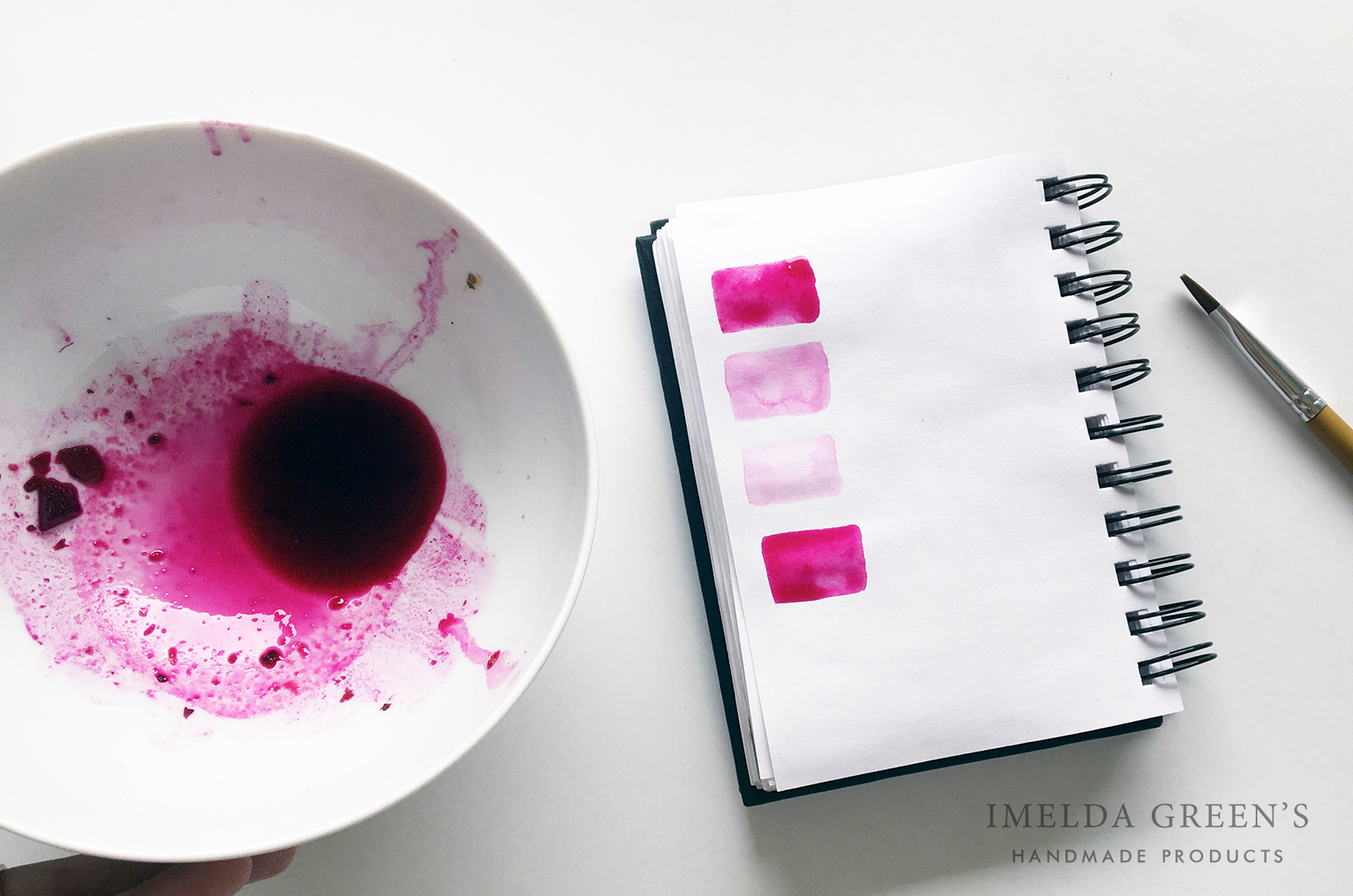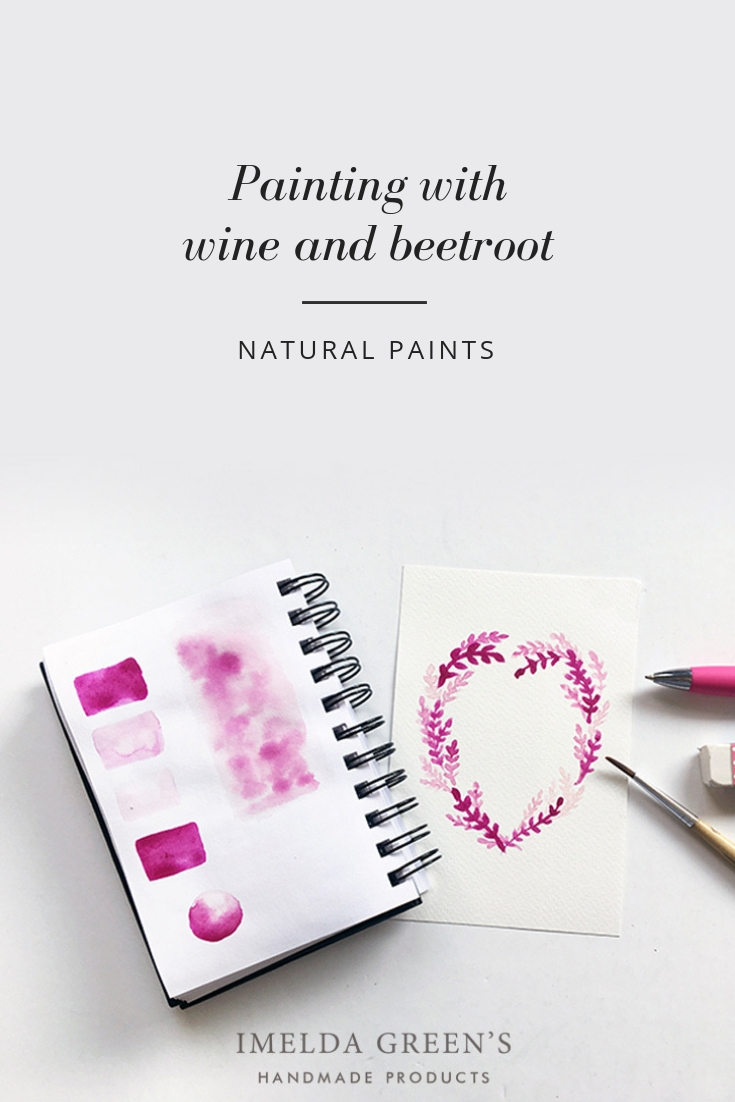
Natural paints – wine and betroot
Using natural paints (eer… food) on paper is always exciting: there is plenty of food around us that contains a lot of pigment, but they all behave differently on paper. I initially planned a post series on natural paints, but I stopped at tea and coffee. So, after 1,5 years, I’m back with another part. For this next experiment I used food that I found at home: red wine and pickled beetroot.
Wine

Painting with red wine is actually not such an uncommon thing, there are many amazing pieces of art that have used this ‘technique’. Let’s see my experiences after the first try:
As for colour, red wine was similar to coffee: while the paint seems dark red (black, in case of coffee), it leaves a light pink mark on the paper (light brown with coffee). During drying, red wine changes its colour: when applied it appears pink, but after drying, it has a more purplish tone.
Wine is a transparent paint, which can be layered like watercolour, even though the layers dry much slower than in the case of watercolour. I am happy to say that both ‘wet on dry’ (bubbles) and ‘wet on wet’ (rectangle on the right) techniques work perfectly. You can achieve darker tones by applying more layers. If you haven’t got the patience for this, there is another way to reach a darker colour: drink a glass of wine in the evening, then go tobed without washing up your glass. :) In the morning you will find a drop of sticky wine at the bottom of your glass, which contains pigment much more concentrated, than liquid wine. However, if you apply a thick layer, it will take a long time dry: the rectangle on the top left took more than 40 minutes to dry.
Beetroot

Out of the 4 natural paints I have tried, beetroot is definitely my favourite. It leaves a wonderfully bright pink mark on the paper – though you could leave it to ‘dry’ in a bowl for a couple of hours, just like wine, to make the pigments more concentrated. You can reach lighter colours by adding water.
The result became slightly sticky – but I think this is due to the fact that I used pickled beetroot, which contained added sugar. However, there is not much difference between wet or dried beetroot paint – unlike wine or tea. If you prefer to use fresh beetroot instead of pickles, you can check how to prepare paint in this video.
Gradients, layering and ‘wet on wet’ techniques all work beautifully with beetroot, but dry layers will not blend with new wet ones.
If you have any questions, leave them in the comments below. What kind of natural paint should I try next?



Comments (2)
Louise Milan
January 28, 2025 at 4:57 pm
Please let me knownif your paints are light sensitive. I am interesred in them
Thank you
Imelda
March 18, 2025 at 1:43 pm
Hello Louise! I am not 100% sure about beetroot, but wine is definitely light sensitive, it loses its vibrancy a lot.